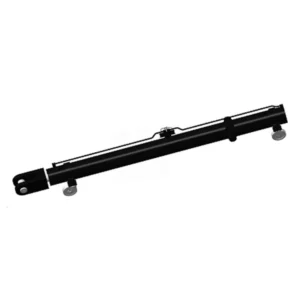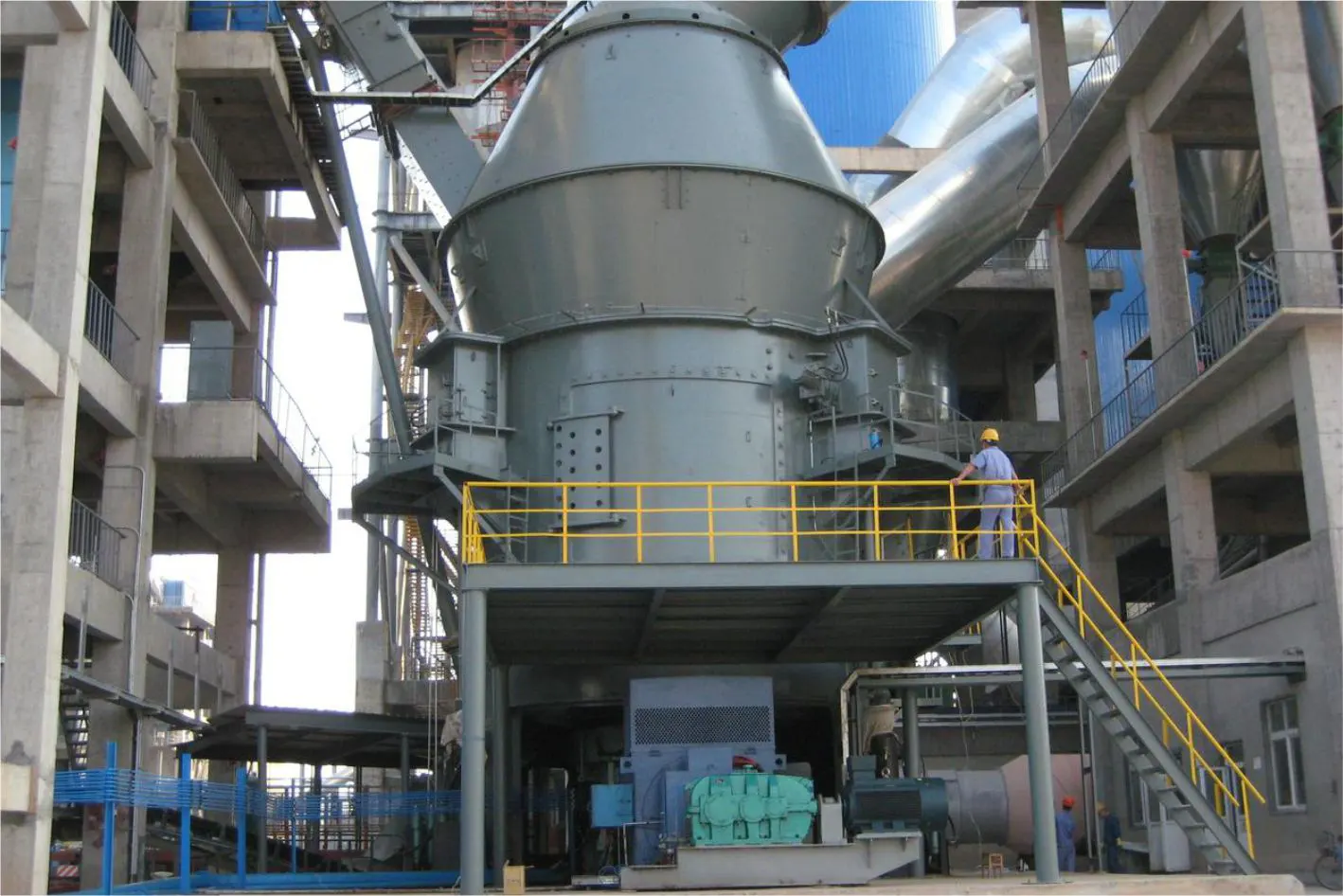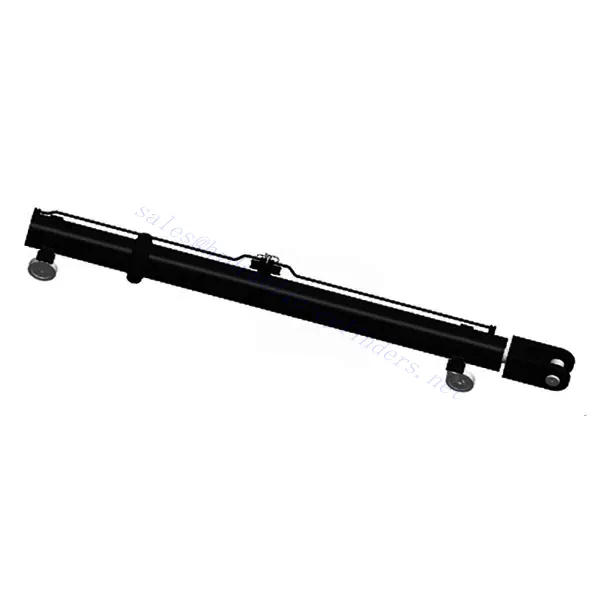Cement Equipment Roll Over Cylinder
Hidrolik silindir üreticilerinden, tedarikçilerinden ve mekanik ürünlerin ihracatçılarından biri olarak, hidrolik silindirler ve diğer birçok ürünü sunuyoruz.
Ayrıntılar için lütfen bizimle iletişime geçin.
Posta:sales@hydraulic-cylinders.net
Hidrolik silindir üreticisi tedarikçisi ihracatçısı.
Cement Equipment Roll Over Cylinder

The cement equipment roll over cylinder is an essential component in cement plants, designed to enhance safety and efficiency during various material handling operations. This specialized cylinder plays a critical role in equipment such as cement mixers and concrete trucks, allowing for controlled tipping and rotation of the drum.
The cement equipment roll over cylinder is critical in cement plants, enhancing safety and efficiency during material handling operations. With its robust construction, precise control, safety features, and compact design, this cylinder allows for controlled tipping and rotation of cement mixers or concrete trucks. By following the recommended usage methods and maintenance practices, you can maximize the performance and longevity of the cement equipment roll over cylinder, ultimately improving your cement manufacturing operations’ safety, productivity, and profitability.
Cement Equipment Roll Over Cylinder Key Characteristics:
- Robust Construction:
- The cement equipment roll over cylinder is built with high-quality materials for durability and reliability in demanding cement plant environments.
- It can withstand heavy loads and the rigors of frequent tipping and rotation without compromising performance.
- Precise Control:
- This cylinder is engineered to provide precise control over the tipping and rotation of cement mixers or concrete trucks.
- It allows operators to maintain stability and accuracy during material discharge, contributing to efficient operations.
- Safety Features:
- The cement equipment roll over cylinder incorporates safety features such as integrated locking mechanisms or safety valves to prevent accidental tipping or rotation.
- These features provide an extra layer of protection for operators, equipment, and surrounding personnel.
- Compact Design:
- The cylinder’s compact design ensures seamless integration into existing cement equipment, minimizing the need for additional modifications.
- It optimizes space utilization and allows for efficient operation in confined spaces.
Cement Equipment Roll Over Cylinder Parameter:
| Product Name | Cement Equipment Roll Over Cylinder |
| Features: | Lifting and falling of driving roller |
| Bore diameter: | 180mm~320mm |
| Rod diameter: | 110mm~170mm Stroke: ≤6000mm |
| Thrust force: | Max 1688KN (Cylinder diameter 320mm/pressure 21MPa) |
| Cement Equipment Roll over Cylinder Applications: | Cement Equipment |
Rod diameter: 110mm~170mm
Stroke: ≤6000mm
(Cylinder diameter 320mm/pressure 21MPa)
Cement Equipment Cylinder Factory:

Usage Method Of Cement Equipment Roll Over Cylinder:
- Installation:
- Follow the manufacturer’s guidelines to securely install the cement equipment roll over cylinder onto the cement mixer or concrete truck.
- Ensure proper alignment and attachment for safe and reliable operation.
- Hydraulic Connection:
- Connect the cylinder to the equipment’s hydraulic system, using appropriate fittings and hoses.
- Verify that all hydraulic connections are secure and free from leaks.
- Operation and Control:
- Engage the hydraulic system to activate the cement equipment roll over cylinder.
- Use the control panel or interface to operate the cylinder, controlling the tipping and rotation of the drum.
- Follow the manufacturer’s instructions and recommended practices for safe and efficient operation.
How To Remove Hydraulic Clutch Line From Master Cylinder?
Removing the hydraulic clutch line from the master cylinder requires careful execution to avoid damaging the components or causing leaks. Here is a step-by-step guide on how to remove a hydraulic clutch line from the master cylinder:
- Gather the necessary tools:
- Safety gloves and goggles
- Wrenches or line wrenches (appropriate size for the fittings)
- Catch a pan or container to collect any spilled fluid
- Clean rags or towels
- Ensure safety precautions:
- Put on safety gloves and goggles to protect yourself from any potential hazards.
- Ensure the engine is turned off, and the vehicle is in park or neutral, with the parking brake engaged.
- Locate the master cylinder:
- The master cylinder for the hydraulic clutch is typically located near the firewall on the driver’s side of the engine compartment.
- Identify the clutch line that connects to the master cylinder. It will have fittings at both ends.
- Prepare for fluid leakage:
- Place a catch pan or container beneath the master cylinder and clutch line to collect any fluid that may leak during the removal process.
- Have clean rags or towels nearby to wipe up any spills.
- Loosen the fittings:
- Use the appropriate wrench or line wrench to loosen the fittings at both ends of the clutch line.
- Turn the wrench counterclockwise to loosen, but be cautious not to overtighten or force the fittings, as they may be delicate.
- Remove the line:
- Once the fittings are loosened, carefully unscrew them by hand until completely detached from the master cylinder.
- Be prepared for some residual fluid to drip from the line and fittings as they are removed.
- Inspect the line and fittings:
- Examine the clutch line and fittings for any signs of damage, wear, or leakage.
- If any issues are found, replacing the line or fittings before reinstallation is recommended.
- Seal the master cylinder:
- To prevent air or debris from entering the master cylinder, cover the open port with a clean rag or cap.
- Dispose of fluid properly:
- Dispose of the collected fluid by local regulations or take it to an appropriate recycling center.
Capability & Capacity Of Factory:
(1) Assembly
We have a first-class independent research and development assembly platform. The hydraulic cylinder production workshop has four semi-automatic lifting cylinder assembly lines and one automatic tilt cylinder assembly line, with a designed annual production capacity of 1 million pieces. The special cylinder workshop is equipped with various specifications of a semi-automatic cleaning assembly system with a designed annual production capacity of 200,000 and equipped with famous CNC machining equipment, a machining center, a high-precision cylinder processing special equipment, a robot welding machine, an automatic cleaning machine, automatic cylinder assembly machine, and automatic painting production line. Existing critical equipment of more than 300 sets (sets). The optimal allocation and efficient use of equipment resources ensure the accuracy requirements of products and meet the high-quality needs of products.


(2) Machining
The machining shop is equipped with a customized inclined rail turning center, machining center, high-speed honing machine, welding robot, and other related equipment, which can handle the processing of cylinder tubes with a maximum inner diameter of 400mm and a maximum length of 6 meters.

(3) Welding

(4) Painting & coating
With small and medium-sized cylinder automatic water-based paint coating lines, to achieve automatic robot loading and unloading and automatic spraying, the design capacity of 4000 pieces per shift;
We also have a semi-automatic paint production line for large cylinders powered by a power chain, with 60 cases per shift design capacity.


(5) Testing
We have first-class inspection facilities and test beds to ensure that the performance of the cylinder meets the requirements.

We are one of the best hydraulic cylinder manufacturers. We can offer comprehensive hydraulic cylinders. We also provide corresponding agricultural gearboxes. We have exported our products to clients worldwide and earned a good reputation because of our superior product quality and after-sales service. We welcome customers at home and abroad to contact us to negotiate business, exchange information, and cooperate with us!
Take a Tour of Our VR Factory:
Take a tour of our VR factory with the following
How Does Forklift Hydraulic Cylinder Work?
Hydraulic Cylinder Application:


